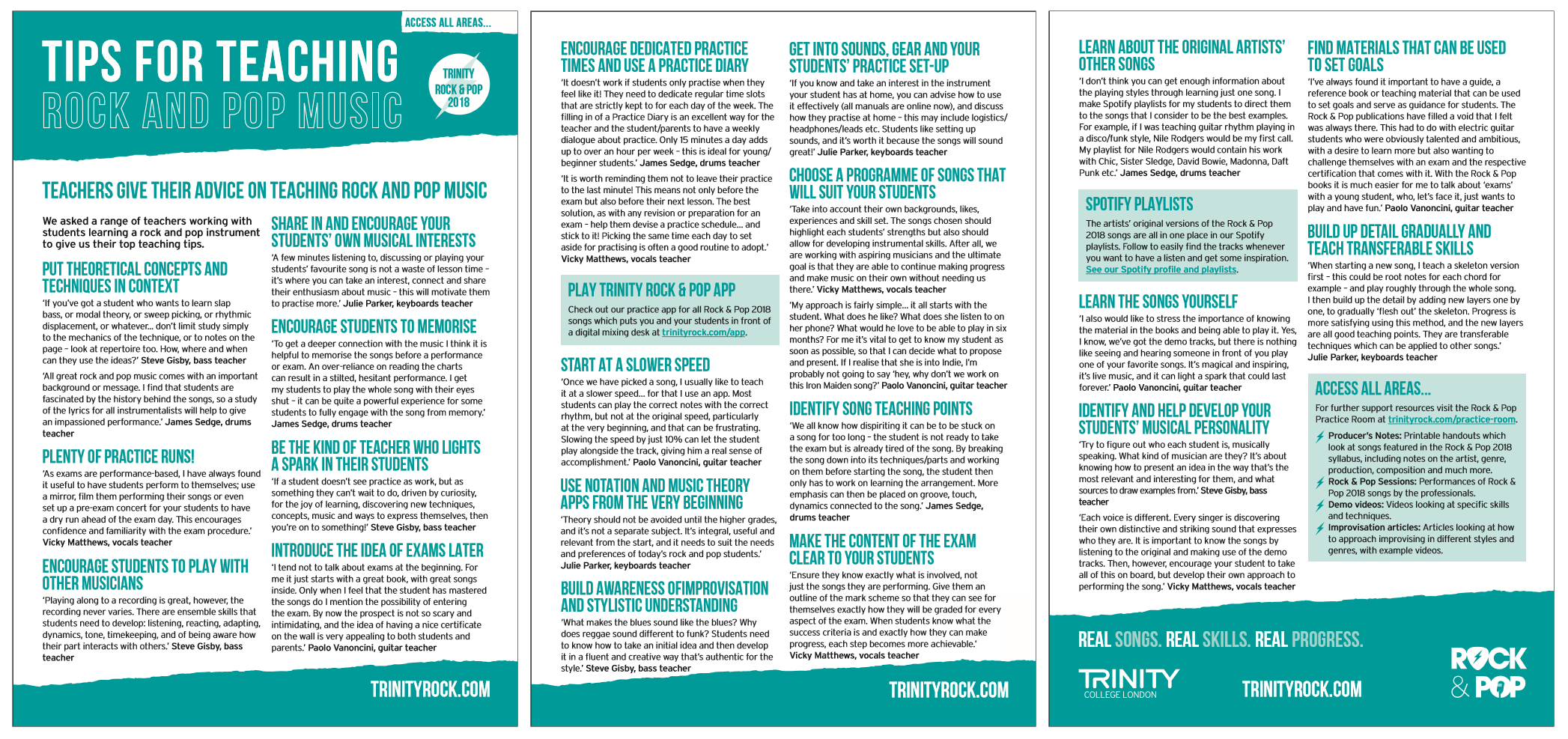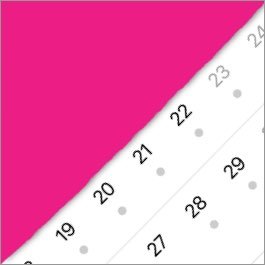MY TOP TIPS FOR TEACHING ROCK AND POP MUSIC: VICKY MATTHEWS

Having achieved a degree in Music and PGCE in Secondary Teaching, I then moved on to become an accredited Advanced Skills Teacher (AST) in Music. I am now an Assistant Headteacher, overseeing whole-school Learning & Teaching, at St Andrew's CE School in Croydon, and have the luxury that I also teach music and head up the music team in the school. Having taught students from KS2 to KS5 over the last 12 years, I have seen first hand the impact that music education has on young people and the important role music plays.
Develop a practice routine with your students
It is worth reminding them not to leave their practice to the last minute! This means not only before the exam but also before their next lesson. This is a conversation that I have had more than once with students when it comes to revising for exams in school, something that most of us are guilty of at one time or another! I tend to advise my students from my own experience…
The best solution, as with any revision or preparation for an exam – help them devise a practice schedule… and stick to it! Picking the same time each day to set aside for practising is often a good routine to adopt. Each student is an individual which is important to remember when helping them with setting up these routines.
Of course, the benefit of the Rock & Pop syllabus is that there is a wide choice of songs available which means that practising will be an enjoyable way to pass the time!
Choose a programme of songs that will suit your students
Take into account their own backgrounds, likes, experiences and skill set. The songs chosen should highlight each students’ strengths but also should allow for developing instrumental skills. After all, we are working with aspiring musicians and the ultimate goal is that they are able to continue making progress and make music on their own without needing us there.
Make the content of the exam clear to your students
Ensure they know exactly what is involved, not just the songs they are performing. Give them an outline of the mark scheme so that they can see for themselves exactly how they will be graded for every aspect of the exam.
This is something I have always done as a teacher, both with private music students and with class teaching at all stages. When students know what the success criteria is and exactly how they can make progress, each step becomes more achievable. A big part of developing as a musician is to be able to identify our own strengths and areas for development, not just relying on someone with more experience to point them out!
Plenty of practice runs!
As exams are performance-based, I have always found it useful to have students perform to themselves; use a mirror, film them performing their songs or even set up a pre-exam concert for your students to have a dry run ahead of the exam day. This encourages confidence and familiarity with the exam procedure.
Make sure your students are really familiar with the accompanying tracks. Practise page-turns and encourage them to memorise the last few bars of the page before and first few of the next page to ensure that there are no hesitations in the performance. Ensure your students know exactly what height their vocal mic should be set up to.; always practise on the guitar that they will be using in their exam; check they’re comfortable with the arrangement of the drum kit and ensure your student knows how to adjust the stands and cymbal angles if necessary! Make all of these a key part of the practice exam – it helps to eliminate any unwanted ‘surprises’ on the day!
Encourage every student to develop their own style
This is perhaps my favourite aspect of teaching singing students in particular. Each voice is different. Every singer is discovering their own distinctive and striking sound that expresses who they are.
It is important to know the songs by listening to the original and covers and making use of the demonstration tracks, such as the ones on the Trinity Rock & Pop website. Trinity also has some Producer’s notes on featured songs. Then, however, encourage your student to take all of this on board, but develop their own approach to performing the song. There are countless opportunities in the repertoire, which encourages students to develop their own style and this is an essential part of the syllabus.
This is nothing new though. Nurturing this in budding musicians is at the core of what we do; that’s why we teach.
Don’t leave the improvising and playback session skills to the last minute!
I believe it is important to teach both aspects to students, despite the Rock & Pop exam only requiring one. Both aspects are so important to any performing musician we almost do our students a disservice if we don’t allow them to explore both elements. Then for their exam, select the option which is most appropriate for the individual. I know with the majority of my singing students, they really excel with improvising as this is something I encourage them to do every day; it becomes an integral part of each vocal lesson. Some students have preferred to opt for the playback session skills, in particular if they are more accurate in identifying pitch, or are able to sight read more proficiently.
The young people I work with are always a source of inspiration. Each pupil is unique; they are all inspired by different artists, influenced by different styles and every one has their own musical aspirations.








